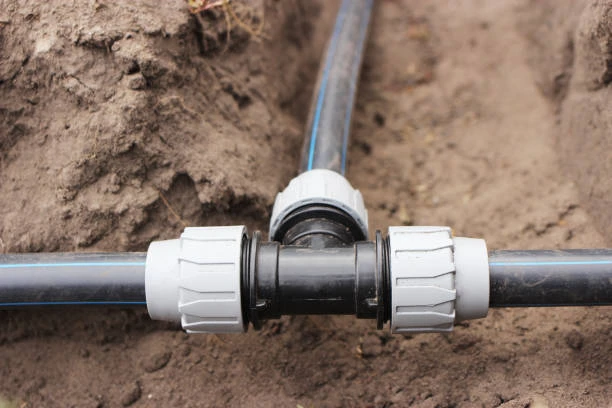Introduction to HDPE Fittings
When it comes to piping solutions, HDPE fittings (High-Density Polyethylene) are becoming the go-to option for many industries. Known for their durability and versatility, these fittings are essential for a wide array of applications. But what sets them apart from traditional materials like metal or PVC? One key factor is the manufacturer’s commitment to producing void-free HDPE fittings.
What is HDPE?
High-Density Polyethylene, or HDPE, is a thermoplastic polymer that is highly resistant to impact and chemicals. This makes it an ideal choice for piping solutions, as it can withstand various environmental conditions and pressure fluctuations. But beyond just being a robust material, HDPE has unique manufacturing properties that allow for the creation of fitting that promise quality and reliability.
Importance of Quality in Fittings
Quality in fittings is non-negotiable. Poorly manufactured fittings can lead to leaks, costly repairs, and even safety hazards. That’s why investing in void-free HDPE fitting is critical. These fittings not only promise longevity but also ensure that your piping systems operate smoothly without interruptions.
Understanding Void-Free Technology
What Does “Void-Free” Mean?
In the context of HDPE fitting, “void-free” refers to the absence of air pockets or voids within the material. These voids can compromise the strength and integrity of the fittings, leading to failures under pressure or stress. A void-free design guarantees that the fittings are solid throughout, offering enhanced performance and reliability.
Benefits of Void-Free HDPE Fittings
The benefits of choosing void-free HDPE fitting are numerous:
- Increased Strength: Without voids, the fittings can better withstand high pressures.
- Reduced Risk of Failure: A solid structure minimizes the chances of leaks or breaks.
- Longevity: High-quality fittings last longer, reducing replacement costs over time.
- Safety: Ensuring no voids means a safer application, especially in critical systems.
Manufacturing Process of HDPE Fittings
Steps in Producing HDPE Fittings
The production of HDPE fitting involves several precise steps:
- Material Selection: Manufacturers choose high-grade HDPE resin for its durability.
- Molding: Workers heat the resin and shape it into fittings using molds.
- Cooling: Cooling the fittings solidifies their shape.
- Quality Assurance: Each fitting undergoes rigorous testing for voids and structural integrity.
Quality Control Measures
Manufacturers implement stringent quality control measures to ensure that every fitting meets industry standards. This includes tests for pressure resistance, dimensional accuracy, and the critical void-free feature.
Advantages of Using HDPE Fittings
Durability and Longevity
Here’s a revised version of the sentence in active voice:
Manufacturers design HDPE fittings for remarkable durability. They resist corrosion, impact, and even extreme temperatures, making them ideal for various applications. When properly maintained, HDPE fitting can last decades, ensuring that you get value for your investment.
Cost-Effectiveness
While the initial cost may be higher than some alternatives, the long-term savings associated with HDPE fittings are significant. Their durability reduces the frequency of replacements, and their lightweight nature makes installation easier and less labor-intensive.
Applications of HDPE Fitting
Common Uses in Industries
HDPE fittings are used across multiple industries, including:
- Water Supply: For municipal and agricultural irrigation systems.
- Waste Management: In sewer and drainage systems.
- Industrial Applications: Chemical and gas transfer.
Environmental Benefits
HDPE is not only efficient but also environmentally friendly. It can be recycled, reducing plastic waste and conserving resources. Choosing HDPE fitting contributes to a more sustainable future.
Manufacturer’s Commitment to Quality
Warranty and Guarantees
Reputable manufacturers of HDPE fitting offer warranties that back their claims of quality and performance. This commitment gives customers peace of mind, knowing that they are investing in reliable products.
Customer Testimonials
Real-world feedback is invaluable. Many customers rave about the durability and reliability of void-free HDPE fitting. Testimonials often highlight reduced maintenance costs and improved system efficiency.

Future of HDPE Fitting in the Industry
Innovations on the Horizon
As technology advances, so does the production of HDPE fitting. New techniques aim to enhance their performance even further, making them more versatile for future applications.
Industry Trends
The trend towards sustainable and durable materials is likely to continue. As industries strive for greener solutions, HDPE fittings are poised to become even more prevalent.
Conclusion
In conclusion, choosing void-free HDPE fitting is a wise investment for any project. Their superior quality, durability, and cost-effectiveness make them a preferred option in various industries. As manufacturers continue to innovate, the future of HDPE fitting looks bright, ensuring reliable and efficient solutions for years to come.
FAQs
1. What are HDPE fittings?
HDPE fittings are connectors made from high-density polyethylene, known for their strength, durability, and resistance to chemicals.
2. Why are void-free fittings important?
Void-free fittings have no air pockets, ensuring strength and reducing the risk of leaks or failures under pressure.
3. How long do HDPE fittings last?
With proper care, HDPE fitting can last for decades, making them a cost-effective choice.
4. Can HDPE fittings be recycled?
Yes, HDPE is recyclable, which contributes to its environmental friendliness.
5. What industries use HDPE fittings?
HDPE fittings are widely used in water supply, waste management, and various industrial applications.


















